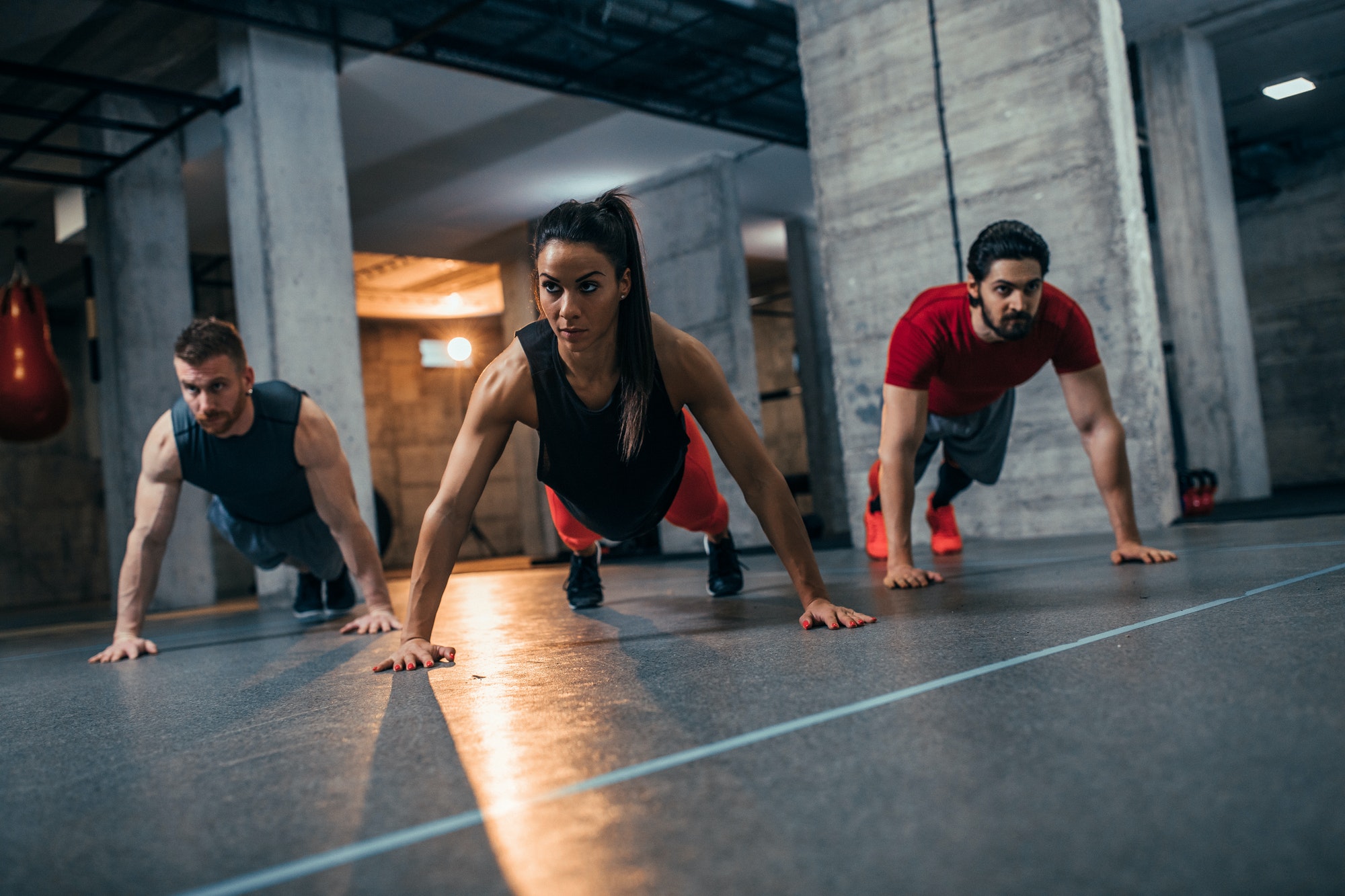Most people think about core strength when they think about the abdominal six-pack. However, this muscle group’s outer layer is not as strong as the core. The core is a group of muscles that control the movement of the pelvis and spine. It’s important to maintain a strong core so that it can perform at its best. Doing so helps maintain a stable and balanced body.
For most people, core strength helps them maintain their ability to perform various tasks and activities, such as walking, sitting, and even playing with their kids. It can also prevent injuries and improve their performance.
The core is a group of muscles that controls the movement and position of the pelvis and spine. It’s also responsible for controlling the legs and upper body. Core stability is a person’s ability to maintain a certain level of control over their body.
Having a strong core can also help boost one’s recovery from an injury. It can also help prevent overuse injuries and improve one’s overall health. It can also help treat and prevent incontinence. Aside from regular situps and pushups, core exercises are also important to maintain a well-rounded fitness program. Doing them regularly can help strengthen the muscles around the pelvis and trunk.
Building a strong core is an integral part of any training program, as it provides the foundation for optimal movement. It bridges the body together and is responsible for generating all of the movements that our bodies perform. Having a strong core will help prevent injuries and improve athletic performance.
Aside from traditional sit-ups and crunches, performing compound movements such as squats and deadlifts can help build core strength. These exercises are performed correctly and will help strengthen the entire body.
What Is The Core of the Body?

The core is made up of the muscles that are in your torso, back, and pelvis. It includes the abdominal muscles, as well as those that are located in the lower back and around your sides. Although it’s not considered powerful, the core muscles play a vital role in maintaining a stable and balanced pelvis and spine.
Your core muscles help keep you balanced and prevent injuries. They also protect you from falls and strains. Being able to maintain a strong core is also important for rehabilitation after a back injury. While performing daily tasks, such as lifting and moving objects, the core muscles are also used to perform various activities such as running, jumping, and tackling.
How to Know Your Core is Weak (Back Pain)
As we get older, we start to experience changes in the structures of the spine, such as the cartilage and bones. Performing core exercises can help restore and control these changes.
Back pain is one of the most common side effects of a weak core. If you’re constantly slouching, you might have a weak core. Other common side effects of a weak core include wrist and foot pain.
Getting the proper amount of exercise can help improve your balance and prevent back and hip pain. One of the most important factors that people should consider is their core strength, which can help them walk upright without swaying.
Like other muscles, the core muscles can become weak if we don’t use them properly. This can put pressure on other parts of the body, such as the lower back. It can also lead to lower back pain.
Another sign that the core muscles are weak is knee pain. A study has shown that a core strength training program can help reduce knee pain. If you have been avoiding exercise for a while, then it’s possible that your core muscles have become weak. Doing some core strength training can help strengthen them.
There are no single exercises that are best for improving core strength. Instead, try different exercises to see which one works best for you. If you have back or knee pain, or if you have recently had a baby, talk to your doctor before starting a new exercise program.
Exercises To Improve Your Core (Video)
While running and walking are great exercises for strengthening the core muscles, there are also some exercises that can be performed to improve the front of the torso. These include the sit-up and the stomach crunch.
Modified versions of these exercises can help improve the results. For instance, performing a modified version of the Swiss ball exercise can increase the strain on the muscles.
For instance, if you’re standing on one leg, the instability of the position can cause the muscles in that leg to work harder to maintain a steady and balanced walk. This is similar to how walking on a slippery surface can affect the muscles in the lower leg.
Doing sit-ups while sitting on a BOSU or Swiss ball can also increase the intensity of the exercise. This is because the muscles in the lower back have to be engaged to maintain the position. The traditional sit-up or crunch exercises mainly work the front of the torso, which is known as the rectus abdominis.
A standard plank is also good for improving the abdominals and strengthening the other muscles of the torso. You can also perform a side plank to work the obliques. A side plank is also beneficial for improving the abdominals and the other muscles of the torso. It can be performed in two different positions.
Performing a push-up position can also help improve the front of the torso. While keeping the knee straight, raise one leg at a time. You can also make this exercise more challenging by raising both arms at the same time. This position forces the ball of one foot to be in contact with the other hand.
This exercise is good for developing the core muscles and keeping them in position. You can also make it easier by performing it on your hands and knees. Aside from performing sit-ups, crunches and planks, adding unstable surfaces such as Swiss balls can also help strengthen the core muscles.
Does Core Exercise Need Any Equipment? (No)
Core exercises are those that involve the use of both your back and abdominal muscles in coordinated fashion. For instance, performing free weights while maintaining a stable trunk can help strengthen both your core and back muscles.
You don’t need equipment to get the most out of your core and abs exercises. There are tons of bodyweight-only exercises that you can do at home that are designed to strengthen these muscles.
You can also perform various core exercises to strengthen and stabilize your abdominal muscles. Some of these include situps, planks, and fitness ball exercises.
Bridge exercises are also known to strengthen the abdominal muscles. Lie on your back and keep your back straight. Keep your hips aligned with your shoulders and knees. Hold the position for as long as possible.
Benefits Of Core Exercise (How Can It Help You)
Core exercises help strengthen the muscles in your lower back, abdomen, and pelvis, which are responsible for maintaining stability and balance in various activities. Core exercises are also helpful for improving the tone and definition of your abdominal muscles. Although it takes a lot of effort to burn fat, core exercises can help tone and strengthen these muscles.
Having strong core muscles can help you perform various activities, such as swinging a golf club. They can also help prevent injuries and fatigue. Having weak core muscles can also lead to less endurance and decrease your chances of running long distances.
Having weak core muscles can also cause poor posture and lower back pain. They can also help decrease muscle injuries. Although core exercises are usually included in most fitness programs, they should also be part of a well-rounded program. Having a well-rounded fitness program can help improve both aerobic and muscular fitness.
A well-rounded fitness program can help people reach their goals and improve their health. It can be done for everyone, whether they’re a novice or a committed fitness enthusiast.
Real Life Advantages Of Strong Core
Your core muscles are the link in a chain that connects your upper and lower body. They play a vital role in most movements, such as moving a ball or cleaning the floor.
Your core muscles work in a circular fashion, which means they ripple upward and downward as motion moves through the chain. If you have weak or inflexible core muscles, they can prevent you from performing certain movements and impair your overall health. Having a strong core helps keep you balanced and prevents falls.
- Everyday Activities: Bending to put on shoes or pick up a package, turning to look behind you, sitting in a chair, or simply standing motionless are just a few of the numerous everyday activities that rely on your core, which you may not realize until they become difficult or uncomfortable. Even simple daily tasks, such as showering or dressing, need the use of your core.
- Helps in almost any jobs that require body strength: Core muscles are used in jobs that require lifting, twisting, and standing. However, less obvious tasks, such as sitting at a desk for hours, also use your core. Phone calls, typing, computer use, and other similar activities can cause back muscles to become stiff and tight, especially if you’re not strong enough to maintain excellent posture and don’t take enough rests.
- Give you a strong back: Exercises that create well-balanced, resilient core muscles can help avoid low back discomfort, a debilitating and sometimes excruciating disease that affects four out of five Americans at some point in their life. When back pain arises, a routine of core exercises is frequently advised, along with medications, physical therapy, and other therapies as needed.
- Most sports activities require a strong core: A strong core is required for golf, tennis, and other racquet sports, as well as biking, jogging, swimming, baseball, volleyball, kayaking, rowing, and many other sports. Sexual activities, which also require core strength and flexibility, are less frequently discussed.
- Helps in almost any work around the housework: Acts that emerge from, or pass through, the core include bending, lifting, twisting, lugging, pounding, reaching aloft, and even vacuuming, mopping, and dusting.
- Stabilizes your body very well: Strong core allows you to move in any direction or stand in one location without losing your balance, even on the bumpiest terrain. When seen in this light, core exercises can help you avoid falling.
- It will fix your posture extremely well: Slouching (my biggest problem) is caused by weak core muscles. Good posture slims your figure and exudes self-assurance. It also allows you to breathe deeply while reducing wear and strain on your spine. Good posture also helps you get the most out of the time and effort you put into exercise.
Related: How Exercise Increases Metabolism?
Is It Hard to Get Core Strength?
A good core program is about focusing on awareness and developing the muscles that are needed to perform the task. Doing so requires concentration and can help improve one’s overall health.
Getting the core activated can be very challenging for people, especially if they’re not used to performing certain activities. However, once they’re able to find their core, it can be used for various tasks, such as walking or sitting.
There are various core strengthening methods that can be used by different people. Some people find that they do well with classes, while others prefer to try yoga or Pilates. Physical therapists can help individuals find a method that works for them.
Core engagement can help people improve their mobility and maintain their independence throughout their lives. It can also help them maintain a more balanced and balanced lifestyle.

Austin is the author of loveatfirstfit.com and a personal trainer with extensive knowledge in nutrition. Austin is passionate about helping others to find a suitable healthy lifestyle and feel good about themselves. Austin’s goal is to help people push their limits and achieve their physical performance.

